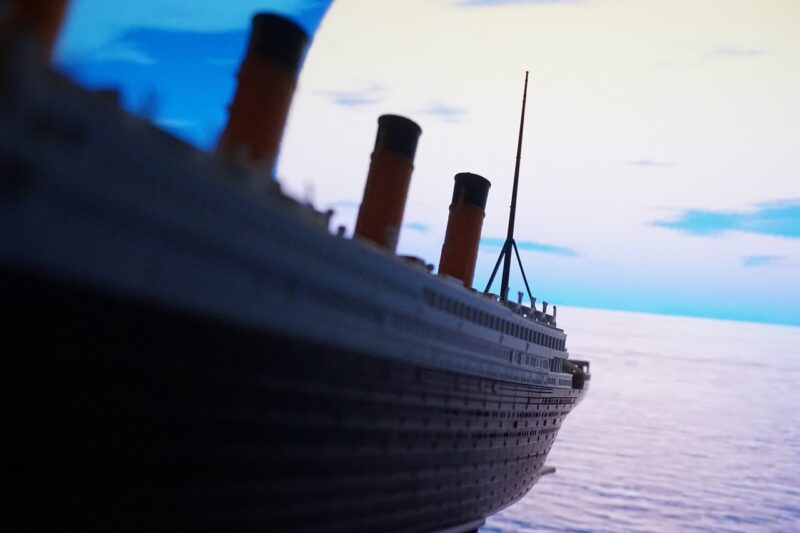Why the Titanic’s Tragic Voyage Still Captivates the World Over a Century Later
November 16, 2024

The RMS Titanic, a vessel often fondly referred to as the “unsinkable ship,” tragically sank on its maiden voyage on April 15, 1912, after striking an iceberg. Over a century later, this maritime disaster continues to enthrall minds across the globe, giving rise to countless discussions, books, films, and documentaries. But what is it about the Titanic that maintains its significance and allure? In this comprehensive exploration, we will delve into the historical, cultural, and psychological factors that contribute to the enduring fascination with this tragic event.
1. The Historical Context of the Titanic
To understand why the Titanic still captivates audiences today, we must first examine the historical backdrop against which this tragedy occurred. The early 20th century was marked by rapid advancements in technology and a burgeoning interest in luxury travel. The Titanic was the apex of that era’s ambition in maritime engineering, representing a pinnacle of comfort, luxurious designs, and technological innovation.
The ship was built by Harland and Wolff in Belfast and operated by the White Star Line. At 882 feet long, it was the largest ship in the world at the time of its launch. Equipped with lavish amenities—swimming pools, fine dining rooms, and opulent cabins—the Titanic symbolized the grandeur of the Edwardian era. Its fame was not only due to its sheer size but also because it embodied human achievement; it was touted as the most luxurious and safest ship ever built.
However, this belief proved tragically misplaced. The Titanic’s sinking, resulting in the death of more than 1,500 passengers and crew members, starkly contrasted the promise of safety and luxury it represented. The loss of life and the stories of heroism and tragedy that unfolded on that fateful night provide endless material for storytelling.
2. The Personal Stories: Humanizing the Disaster
An essential aspect of the Titanic’s lasting legacy lies in the personal stories of the individuals aboard the ship. Each passenger had their own narrative—hopes, dreams, and lives disrupted by the iceberg’s impact. The tragedy’s scale is almost incomprehensible, but through survivor testimonies and victim identities, the Titanic evolves from a mere maritime disaster into a profound human event.
Survivors like Molly Brown, known as “The Unsinkable Molly Brown,” and the poignant stories of families torn apart or sacrificed for loved ones touch a deep emotional chord. The tales of passengers, both famous and unknown, lend a tragic yet compelling tapestry that draws people closer, transcending time and space.
Each storyline allows modern audiences to connect with the past, reminding us of the vulnerability of life and the consequences of human error and overconfidence.
3. Cultural Representations and Media Impact
Since the Titanic disaster, numerous cultural representations have solidified the ship’s place in popular history. The 1997 blockbuster film “Titanic” by James Cameron reignited global interest, showcasing the romance, wealth, and drama that surrounded the ship. Winning 11 Academy Awards, including Best Picture, the film beautifully blended historical narrative with fictional characters, making the tragedy accessible to millions.
Moreover, this cinematic portrayal established iconic images and deep emotional links to the Titanic tragedy that linger in popular culture. Additionally, documentaries, books, and museum exhibitions continually re-examine the fateful voyage, ensuring its relevance. Historical accuracy paired with compelling storytelling keeps the ship’s story alive in collective consciousness.
Through such representations, newer generations flavor the Titanic lore, contributing to public discourse and imagination surrounding this historical event.
4. Lessons on Safety and Engineering
The tragedy of the Titanic taught critical lessons about naval safety, engineering, and human decision-making. In the aftermath of the disaster, significant legal and design changes were implemented in the maritime industry. Lifeboat regulations were established, safety drills became mandatory, and ships began adopting more stringent oversight practices. Thus, the Titanic serves as a reminder of the importance of balancing ambition with caution—a lesson that remains relevant in today’s high-stakes environment across numerous industries.
Furthermore, the desire to understand what went wrong with the Titanic inspires ongoing research and inquiry in ship design, safety protocols, and disaster preparedness. These lessons keep the ship’s memory alive as they resonate with modern-day incidents and disaster responses.
5. The Psychological Fascination with Disasters
Human interest in tragedy often juxtaposes curiosity with horror. The Titanic represents not only a calamity but also the profound themes of loss, human resilience, and the socio-economic divides that were starkly highlighted during the sinking. Scholars posit that tragedies like the Titanic etched into our collective memory often prompt reflections about fate, morality, and humanity’s place in the world.
Psychologically, the attraction to such disasters stems from our primal instincts. They serve as a reminder of life’s unpredictability, prompting existential ponderings about human fragility. The Titanic’s harrowing stories draw people in, allowing them to experience the range of human emotions—fear, love, despair—as they engage with the archived and fictionalized accounts.
The fascination persists, as people find solace in reflecting on resilience and survival after catastrophes.
6. Conclusion: The Titanic’s Enduring Legacy
The RMS Titanic encapsulates a cocktail of hope and despair, ambition and catastrophe. Its story continues to grasp our imaginations and symbolizes humanity’s complexities. Over a century later, it remains a powerful cultural touchstone, inviting dialogue about society’s evolution, technological aspirations, and against-the-odds survival.
The Titanic teaches us about the triumphs and tragedies of human existence, and its legacy is likely to remain a source of inquiry and inspiration for generations to come. The exploration of this tragedy goes beyond the historical event itself; it ultimately leads to deeper human connections, moral contemplation, and the lessons we must carry forward into the future.








